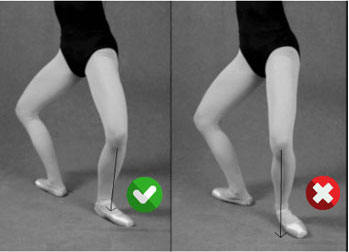BUNIONS Hallux Abducto Valgus HAV

Bunions (Hallux Abducto Valgus—HAV)
Bunions - HAV are a change in the alignment of the bones in the first ray this produces a bony growth on the side of the 1st -big toe joint. This is called Hallux Abducto Valgus (HAV) commonly known as a bunion.
Bunions can be common in dancers. They begin to develop in young dancers who do not have the muscle recruitment in place to support the growing bones.
Both male and female dancers are at risk from the increased stress on the medial column of the foot as a dancer attempts to achieve greater turnout from the knee and ankle.
Bunions can have a number of causes including:
- hereditary disposition, genetics
- loose ligaments hypermobility
- poor footwear
- inflammatory arthritis
- over pronation of the feet.
Some bunions (or hallux valgus) are hereditary, however dancers may develop them as a result of forcing turn out with little to no intrinsic muscle control.
Tight fitting shoes and pointe shoes may also contribute to bunions as the shoes narrow to the pointe and the foot is broadest across the metatarsals.
Squeezing the toes into narrow pointe shoes put pressure onto the big toe joint which is exacerbated by carrying the weight of the body on the tiny surface of the shoe en pointe.
Repeated strain on the big toe joint may result in hallux rigidus or stiffness of the big toe. Dancers with bunions are more prone to hallux limitus.
The shock and forces from dancing can lead to inflammation of the big toe joint, and over time cause stiffness and a lack of range of motion. Because of the pain and stiffness, dancers will shift their weight to the outside of the foot during demi-pointe.
 Symptoms
Symptoms
Bunions -HAV can cause pain when walking and movement of the hallux (big toe). This pain is due to degeneration of the cartilage of the joint (osteo arthritis) that occurs during the formation of the bunion.
Long standing bunions -HAV can also cause the 2nd toe to retract and dislocate. This can lead to the formation of corns and calluses under the ball of the foot which can become a painful part of the foot and need regular podiatric treatment.
Treatment
Our podiatrist will assess your foot and identify the severity of your bunion. The treatment plan will depend on the severity. Minor deformities are predominantly caused by over pronation of the feet and the pain caused by the deformity can be decreased and further joint degeneration can be reduced with the use of orthotics, night splints and a exercise conditioning plan.
Major deformities can require surgery to restore the alignment and function of the 1st MTPJ (big toe joint).
Post surgical orthotics are required to slow and prevent any recurrence of the bunion and stabilise the joint.
Any questions please feel free to ask out Pointe podiatrist, who will be happy to help you.
